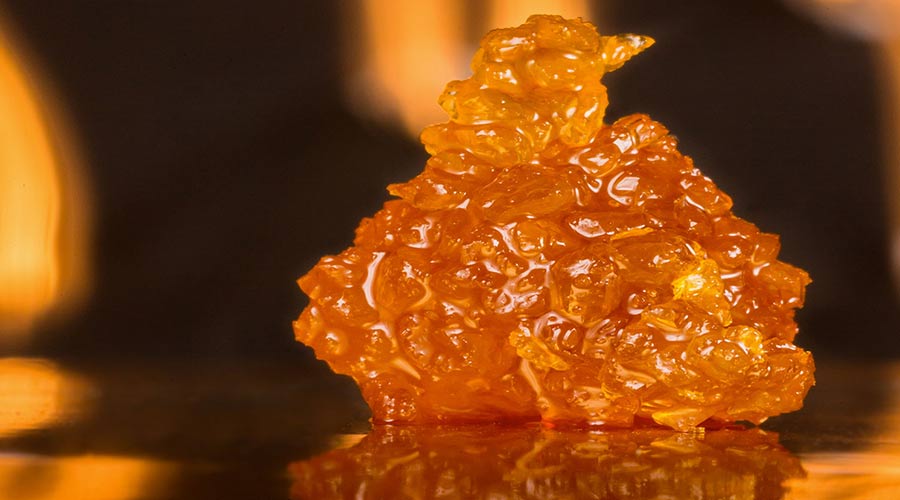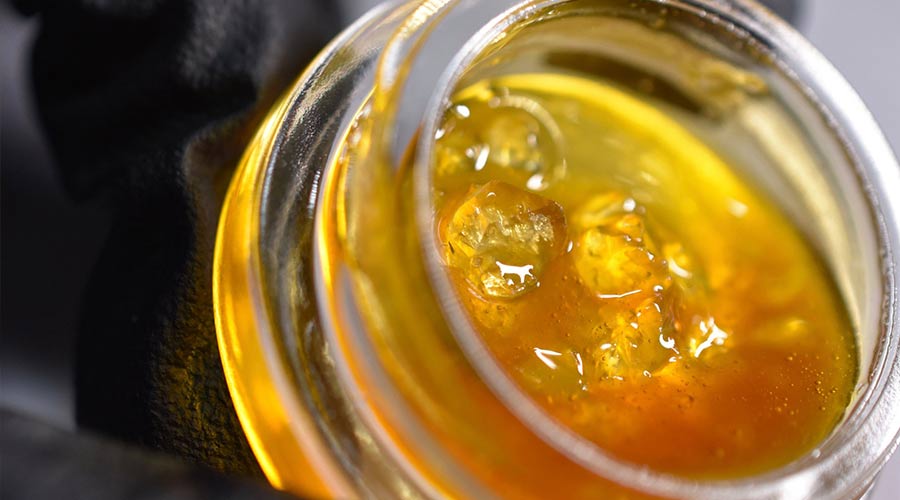Article contents
You’ve heard of dabs. You’ve heard of shatter. You’ve even heard of CBD oil. But what about “live resin?” What is live resin, and what does it mean for the future of marijuana concentrates?
First, a bit of background. Dabs (aka wax, hash oil, honey, etc.) are a form of cannabis concentrate made by stripping cannabinoids from the plant with butane, alcohol, and other solvents. Smoking this thick, sticky oil provides a powerful high and many potential medical benefits.
Dabbing has been a hot trend across the United States for a while now, especially in states such as Colorado and Oregon where pot is legal for recreation. Home manufacture is also popular, if dangerous. But cutting-edge stoners are always on the lookout for new twists to their favorite pastime, and live resin is one of the latest. Read on to learn what is live resin and what makes it better than other types of concentrates.
What is live resin?
There is one key difference between live resin dabs and traditional dabs: The standard stuff is made from cannabis bud that has been dried, cured, and ground, while live resin is made from freshly harvested marijuana flower.

Made with fresh bud, Live Resin is more flavorsome and rich in terpenes than other forms of concentrates.
At a more scientific, biological level, the difference is all about terpenes. These are a form of hydrocarbon found in many trees and flowering plants, especially cannabis, and they give the drug its distinctive tastes and odors.
What makes live resin better than other concentrates?
Live resin contains a more pleasing terpene profile than cured bud because the curing process removes so-called monoterpenes while boosting sesquiterpenes. These complementary chemicals give cannabis is multi-layered aromas: Monoterpenes create light, “fresh” aromas, while sesquiterpenes generate heavier flavors such as pepper and hops.
That means live resin dabs offer a fresher, more flavorsome experience than traditional dabs. An analysis by High Times magazine found live resin contains about 2 percent more monoterpenes than standard oil but 11 percent less sesquiterpenes.
While some concentrate makers swear by live resin as medication, there is less evidence that it gets users any higher than other forms of hash oil. Freezing weed does not increase its THC or other cannabinoid levels, and THC concentration is the only factor in marijuana potency.
How to make live resin
But how is live resin made? And can you do it at home?
The answer to the latter question is simple: not unless you have the money to afford extremely expensive industrial lab equipment and cryogenic freezing machines. The answer to the former is only slightly more complicated.

Live Resin requires specialist equipment for freezing and extraction of the concentrates.
The first step in making live resin is to flash freeze fresh whole cannabis flower at very low temperatures. This prevents degradation of terpenes and other chemicals that influence the quality of the pot. Resin is then extracted from the frozen bud and refined into smokeable dabs.
Live resin is a great thing, but there are downsides. It’s hard to find and often very expensive. It’s difficult to make, putting home labs out of reach for most potheads. And even those who could afford to try it probably shouldn’t, as several of the required steps could prove fatal.
That said, it’s worth trying live resin if you can safely get your hands on it. And every stoner loves a challenge, right?


I was suffering from depression some months back and my friend suggested me to use some Live resin and it was totally worth it. It helped e get over my depression which was due to excessive stress. I would totally recommend you to try some live resin.
ANY TIPS TO MAKE DABS W PROPANE
Check out the article on PHO here https://yodabbadabba.com/dabbing-resources/what-is-propane-hash-oil-pho/